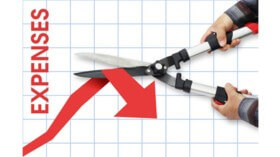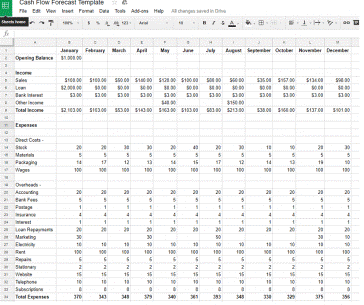Post Pandemic – Survival Then Revival
The coronavirus has been labelled the biggest global crisis for three generations. The economy came down 50 floors in the ‘elevator’ and it will be much slower and harder going back up via the staircase.
The pandemic didn’t discriminate with both big and small businesses going into hibernation and with so many business owners in survival mode, cash flow is understandably the number one priority. It is the oxygen that keeps businesses alive and for those forced into hibernation and unable to trade, the Government Stimulus Packages have provided a temporary lifeline. Some businesses have been able to pivot and find new ways to generate revenue, however, the shutdown has created a cash flow crisis for most business owners.
While revenues have been diminished or extinguished, some expenses won’t stop. Proactive business owners have been able to negotiate a rent reduction or rent-free period; however, you may have to fund IT equipment for your staff who are now working remotely. Expenses like insurance and rates don’t stop and it is imperative that you have a clear understanding of your future cash flow. To help your business survive and prepare for the period of regrowth we have put together this list of items to consider:
The main reason business owners usually prepare a cash flow forecast is to raise finance, however, right now it needs to identify the timing of potential cash shortages.
Typically, your forecast should project cash flow for the next 12 months but right now, the next 3 to 6 months is essential. Keep updating
it at least every month as you get more information and certainty around revenue and costs.
Whenever you prepare a cash flow budget you have to make a number of assumptions based on research, available data plus known facts such as
fixed costs like your rent and loan repayments. The economic uncertainty makes it particularly hard to project your revenue, but you
do need to use your best estimates. For some businesses, with interrupted revenue, calculating your Government entitlements is a
priority. Don’t forget to include your tax payments (or refunds) and your cash flow forecast should provide you with your likely cash
position at the end of each month.
The idea is to identify the likely cash shortages and solve them before they become critical.
A cash flow budget template is available to download from the resources tab of our website.
2. Know Your Numbers
 Up
to date, accurate financial records allow us to work together to make informed business decisions. Start by preparing interim financial
statements so you know where you stand for this financial year. What is your likely tax position for the year ended June 30, 2020? Can you
vary your PAYG instalments? What entitlements do you have to Government incentives like the cash boost, JobKeeper and State Government
grants?
Up
to date, accurate financial records allow us to work together to make informed business decisions. Start by preparing interim financial
statements so you know where you stand for this financial year. What is your likely tax position for the year ended June 30, 2020? Can you
vary your PAYG instalments? What entitlements do you have to Government incentives like the cash boost, JobKeeper and State Government
grants?
Your numbers tell you where you have been so you can make decisions to improve your results going forward. Compare your sales in 2020 against the same week and month in 2019. Breakdown your sales by product so you know what your best-selling items are. Know the profit margin on each product so you can identify your most profitable items.
It’s also important that you have a snapshot of key financial numbers including your accounts receivable (debtors), accounts payable (creditors) and current bank balances.
3. Renegotiate
An obvious strategy is to reduce your overheads that could mean renegotiating your commercial rent. Landlords will generally want to maintain relationships with long-term tenants and the Government introduced a mandatory code of conduct for commercial tenants affected by the coronavirus. Revisit payment terms with your suppliers and you might want to check in with them regarding their pricing policies post pandemic. Of course, make sure they are still in business and can continue to supply you. You might find it’s a good time to explore new suppliers who might be able to provide the same product or production inputs at cheaper prices. Now is the time to explore any loan deferrals on offer from the banks.
4. Remove Non-Essential Expenses
Go through your profit and loss statement, line by line to identify any expenses that could be shaved or eliminated. Do you need the same amount of stock or warehousing? Do you need to maintain the same hours or number of staff? Could you postpone some expenditure? With cash flow uncertainty, it’s obviously appropriate to defer any capital expenditure despite the instant asset write off concession.
5. Prepare for the Post Pandemic Period
COVID-19 arrived with little or no warning but it’s time to plan for the post pandemic period. Do a SWOT analysis to analyse your business’ strengths, weaknesses, opportunities, and threats. Think about what you could be doing better and what resources you need going forward. There might be opportunities in the ‘new world’ because some of your competitors probably won’t survive this upheaval. You might be sitting on new products or processes and it could be time to hatch that plan you have been sitting on. Look at how quickly businesses embraced working remotely after hesitating for years.
Maybe it’s time to pivot, expand or reduce your product offering. Have you been too dependent on one major customer? Should you expand your home delivery services? Is it time to review your suppliers? Keep asking questions because how you’ve managed the crisis might provide clues on how you should operate in the future.
 6.
Marketing Just Became Even More Important
6.
Marketing Just Became Even More Important
In recessionary times your marketing could be the difference between boom, doom and gloom. It is a stressful time and it’s easy to get distracted by financial matters not to mention staffing issues. You need to stay top of mind with your existing customers so it’s essential that you reach out to them with a newsletter or special offer. Remember, most people tend to reduce their spending at this time so targeting your existing customers makes sense. They know and trust you. The obvious question is, Is your client database up to date so you can send emails? If not, fix it!
The isolation period saw an explosion of online sales so it could be time to review your online presence. Is it time for a website makeover? Is your e-commerce section on your website up to scratch? Is it time to review your product descriptions, add calls to action, produce some videos and write some blog posts? Is your social media strategy in need of an overhaul?
In summary, it’s not easy to focus beyond the current crisis. Basic survival instincts will make you focus on building cash reserves; however, revival is all about preparing for the new 'normal'.
As always, don't hesitate to contact us for more information.
This article forms part of our Business Accelerator Magazine. Download the latest edition HERE or browse other articles from this edition below:
- Temporary Early Access to Superannuation
- Are You Swimming Naked?
- Pivot, Adapt, Survive & Even Thrive - How to Pivot Your Business
- Working Remotely? The Ins and Outs of Claiming Home Office Expenses
- Return to Top
Also, don't miss our End of Financial Year Tax Planning Guide and our COVID-19 Help for Business Guide
Disclaimer: This newsletter contains general information only. No responsibility can be accepted for errors, omissions or possible misleading statements. No responsibility can be accepted for any action taken as a result of any information contained in these articles. It is not designed to be a substitute for professional advice and does not take into account your personal circumstances.















